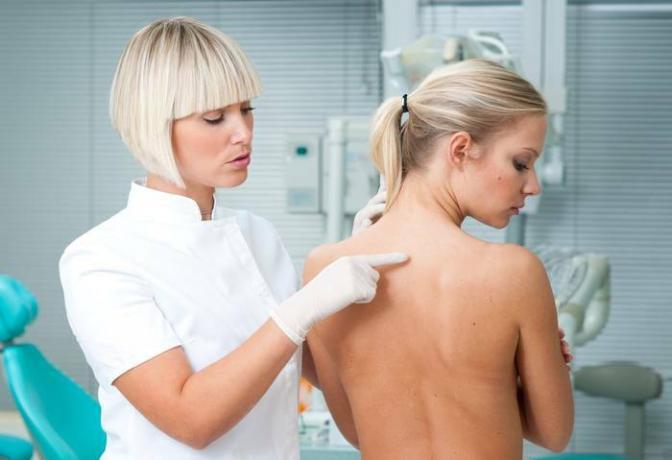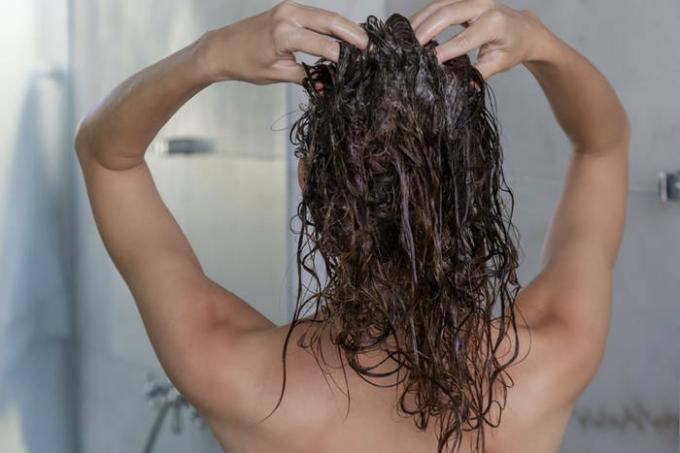Versicolor versicolor is especially intense on the skin in summer. How to determine the disease and how to cure it in two weeks, says a dermatovernerologist
Multi-colored (aka pityriasis, aka solar) lichen is not a dangerous disease, but not too aesthetic. It manifests itself as spots on the skin: at first, small, up to 5 mm in diameter. They are single, inconspicuous and are most often located on the arms, back and shoulders. Over time, the spots get bigger: if the tinea versicolor is not treated in time, they can cover the entire upper body. In the cold season, they can be of different colors - from light pink, red and brown to brownish yellow. However, in the sun, lichen “burns out” and the spots turn white. This is especially noticeable against the background of sunburn, which is why pityriasis versicolor is also called "beach disease". Dermatovenerologist, cosmetologist-injectionist of the Comfort Clinic told us about where this disease comes from and how to deal with it. Elena Cherevko
The causes of the appearance of colored lichen

For children, pityriasis versicolor is practically not dangerous / istockphoto.com
Versicolor versicolor is a fungal infection of the skin. Its causative agent is the microorganism Malassezia, which belongs to the category of opportunistic fungi. This means that it normally lives on the surface of the skin in most people (such as, for example, the Candida fungus, which periodically causes in women thrush) and only in certain cases begins to actively multiply and create entire colonies in the form of unaesthetic spots.
There can be many reasons that cause the activity of the fungus on the skin. But the main one is a certain pH, that is, the acidity of the skin. “This indicator is different for each person, and not every RN“ fits ”the fungus, - says Elena Cherevko. - Therefore, it often happens that in a family only one person is sick with varicoloured lichen. Simply because the rest of the family members are "tasteless" for the fungus, and it is uncomfortable for the fungus to develop its vigorous activity on their skin. By the way, children are not very susceptible to this disease: according to doctors' observations, this lichen is practically not contagious for babies and children under 10 years old. "
At the same time, even the predisposition of the skin does not mean that you will definitely get sick with versicolor versicolor. For this, other stars must converge in the sky. “The active development of the disease is facilitated by a temporary weakening of the immune system,” explains Elena Cherevko. - The fungus can "grow" after an illness, stress, hard physical or mental work, chronic lack of sleep. Also, the cause may be long-term treatment with hormonal drugs and (note) heredity. But in summer, heat and increased sweating become an additional stimulus. "
The main symptoms of the disease

Lichen spots can be pink in color (photo from open sources)
The first sign of the disease is the appearance on the body (most often this is the upper part: arms, shoulders, chest, back, neck) of single small spots. In fair-skinned people, they can be darker than the main skin color, in people with dark (like after sunburn) skin - on the contrary, lighter. There is no specific color; lichen is characterized by pink, red, brown, yellow, light and dark brown, as well as white spots. That is why it is called multi-colored.

On a tanned body, lichen becomes whitish (photo from open sources)
At first, spots in diameter are only a few millimeters, then they begin to increase in size and merge into foci. In advanced cases, the lesions cover the entire chest, back, or shoulders. The skin in these places becomes denser, areas of peeling appear. When touched, the upper layer of the epidermis can easily flake off in small flakes, similar to bran (therefore, another name for lichen is pityriasis). At the same time, the sick person does not experience any unpleasant sensations. The spots do not itch, do not hurt and do not interfere with anything, except for an unaesthetic look.
Diagnostics at home
It is easy to distinguish pityriasis versicolor from other fungal skin lesions at home. To do this, it is enough to carry out the so-called Balzer iodine test. “Take a solution of iodine (5%), use a cotton swab to apply it to the stain with the capture of healthy skin and immediately wipe it with rubbing alcohol,” says Elena Cherevko. "Healthy skin will be slightly colored, but the area affected by lichen will quickly absorb iodine and will be colored very intensely."
How to cure tinea versicolor

Treatment of the disease is not difficult, but requires regularity / istockphoto.com
Treatment of pityriasis lichen at the initial stage (while there are only a few single spots on the body) is not a difficult process, not too expensive and takes only two weeks. It is advisable, of course, to show the problem to the doctor, but if you are faced with an illness at the resort, you can try to cope with the shingles on your own. “To do this, you will have to put aside your usual shower gels for a while and use shampoos with ketoconazole to wash your body,” advises Elena Cherevko. - These are medicated shampoos that are used to treat dandruff (which, by the way, is also caused by the fungus Malassezia). They are sold from any pharmacy without a prescription. You need to wash yourself daily and thoroughly: it is advisable to lather your body and not wash off the shampoo for two to three minutes. "
The same shampoo should be used throughout the treatment (i.e., two weeks) for shampooing. “This is necessary, because the foci of the fungus can be located on the back of the head under the hair. If you heal the body, but don’t heal the head, in a couple of weeks the problem will come back to you, ”warns Elena Cherevko. You can wash your hair not every day, but the way you are used to. Be prepared for ketoconazole shampoos to dry out your skin, so use a hair balm after washing.

To get rid of shingles, do not forget to wash your hair / istockphoto.com
“In addition to regular washing of the body, stains need to be treated locally twice a day,” continues Elena Cherevko. - To do this, you will have to buy an antifungal ointment or cream with sertaconazole at the pharmacy. As a rule, these two remedies are enough to get rid of lichen coloring in two weeks. In advanced cases, you may need to take antifungal pills. But these drugs are quite toxic and harmful to the stomach, so a doctor should definitely prescribe them. "
Another important point is ongoing disinfection. It doesn't matter if you are at home or on vacation, you will have to wash all your personal belongings. Desirable - at the highest possible temperature. For example, it is better to turn towels and bed linen in the washing machine at 90 degrees. Pay special attention to clothes that are in direct contact with the body: underwear, T-shirts, T-shirts. If these are delicate fabrics that cannot be washed in hot water, spray them with isopropyl alcohol antiseptic spray and let them sit for 3-5 minutes.
Prevention of relapse of the disease
If you once had pityriasis versicolor, it means that your skin is prone to re-infection. Therefore, you need to be on the alert at all times. “Most often, women pick up mushroom spores in the fitting room when they put on clothes that have been measured by many people before,” emphasizes Elena Cherevko. - After trying on, go home, take off your clothes and send them to the wash with what you bought. Wash immediately with ketoconazole shampoo. This will avoid re-infection. Similarly, you need to act after contact with other potential sources of the fungus. For example, after the pool or bath, where you are given towels. "
You will also be interested to read:
Ringworm in a child: sources of infection, symptoms and treatment
What to do if a child has lichen

